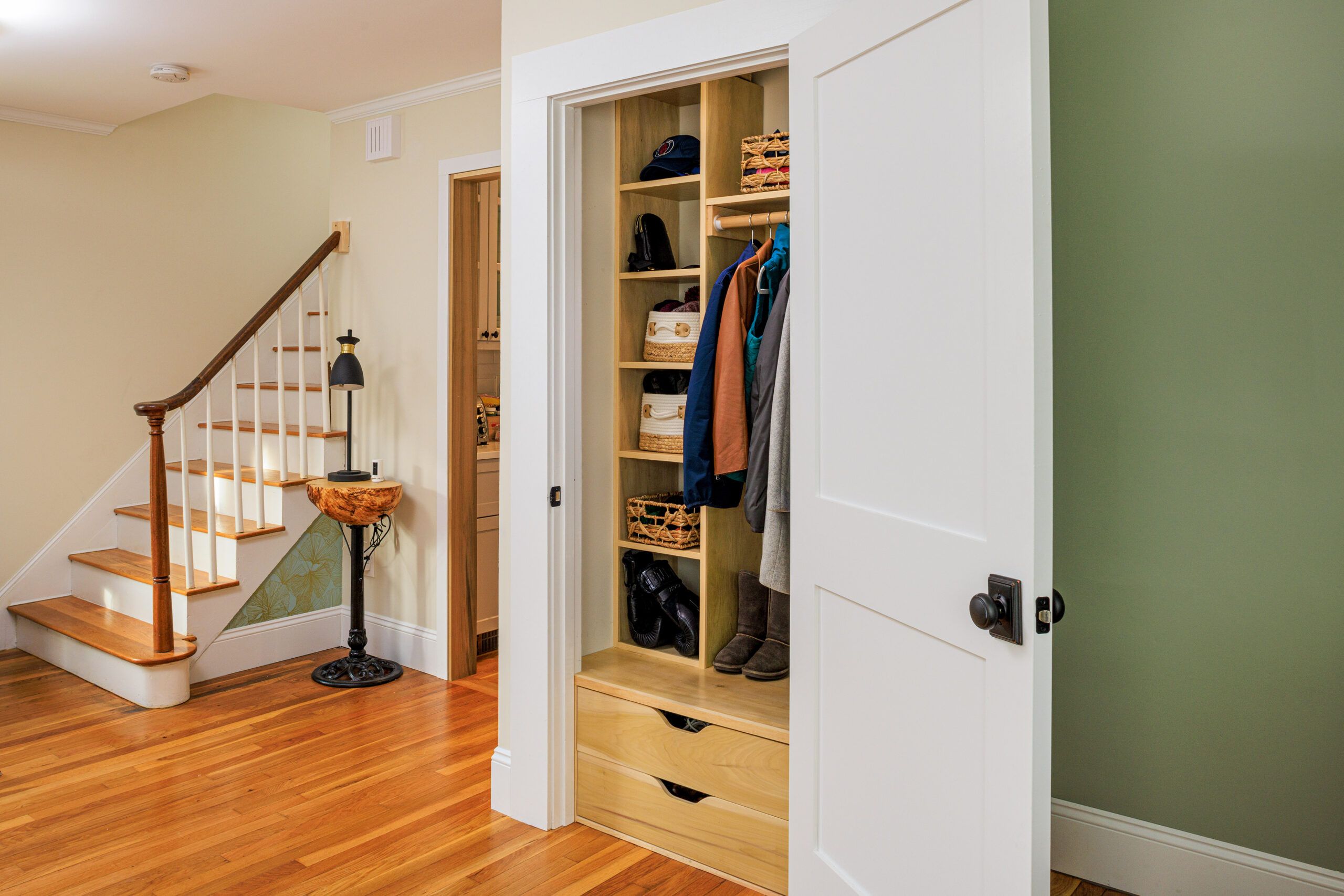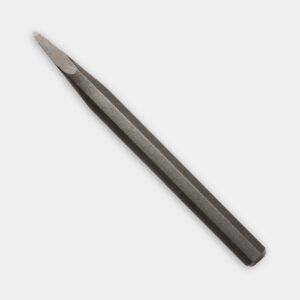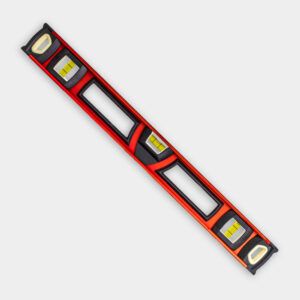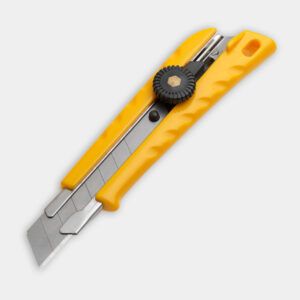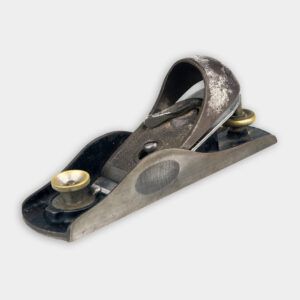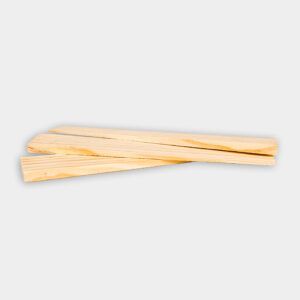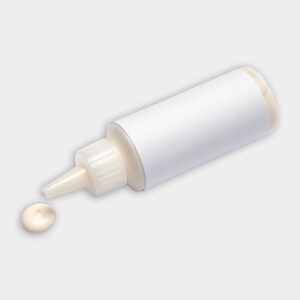We may be compensated if you purchase through links on our website. Our team is committed to delivering honest, objective, and independent reviews on home products and services.
Installing door trim can can help conceal the gap between your door and the frame or add a decorative touch to your space. Whether you’re upgrading existing trim or installing it fresh, this guide will walk you through how to install it on your own.
Types of Door Trim
Various door trim types are available, from simple, flat designs to more decorative, molded styles. Here are the two main categories:
- Mitered trim: This style features 45-degree angled cuts at the corners, creating a seamless look that works well in modern settings or homes with low ceilings. While visually simpler, it tends to be a more challenging DIY project.
- Butted trim: This type has square-cut ends that meet at 90-degree angles. It’s an easier DIY project since there are no angles to join, and it offers more options for customizing with larger head casings.
Choosing the right type of door trim depends on your home’s style and your personal preferences. Mix and match door trim styles to create a unique look for your space. You can also choose a different style when installing exterior door trim.
Tools and Materials for Door Trim Installation
If you’ve done any woodworking before, you’ll likely have most of the tools that you need for this project.
Tools
- Miter saw or miter box with a handsaw: Essential for precise cuts.
- Tape measure: Accurate measurements are necessary for a good fit.
- Pencil: For marking measurements and cutting lines.
- Level: Ensures installation is in plane, or level.
- Combination square: Helps measure and mark the reveal.
- Hammer or nail gun: For securing the trim in place.
- Pry bar (for removing old trim): Handy for demolition work.
- Caulk gun: Needed to apply painter’s caulk.
- Sandpaper: For smoothing rough edges and surfaces.
Materials
- Door casing (pre-primed or finished): Choose a style that complements your home’s decor.
- Finish nails (4d and 6d sizes): Used for securing the trim.
- Wood filler: For filling nail holes and gaps.
- Painter’s caulk: For sealing edges and creating a smooth finish.
- Shims (if needed): For a flush fit.
Preparing the Door and Surrounding Area
Take the time to properly prepare the installation area for better fit and finish.
Measuring and Marking the Reveal
The reveal is the small gap between the edge of the door jamb (i.e., the frame from which the door is hinged and where the latch engages) and the trim. To outline it, use a combination square to mark a consistent reveal of 1/8 to 1/4 inch around the entire door frame. These marks will serve as your guide for positioning the trim.
Carefully measure the reveal to create a balanced and symmetrical appearance around the door.
Addressing Wall and Jamb Inconsistencies
Before installing trim, make sure the jamb and wall are flush. If not:
- For projecting jambs: Plane them flush with the wall if possible. Make sure the trim sits flat against the wall.
- For recessed jambs: Use shims behind the casing to make it level with the wall surface.
- For walls extending beyond the jamb: Consider rabbeting the back of the casing or adding jamb extensions.
Removing Old Trim
When replacing existing trim, use a pry bar to carefully remove the old trim without damaging the wall or door frame. Remove any nails and sand down rough spots to smooth the surface for the new trim.
In the video below, carpenter Nathan Gilbert showcases how to replace exterior door trim.
Step-by-Step Installation Process
After you’ve measured everything and you have all of your materials, you’re ready to get started.
- Once you’ve marked the reveal, hold a casing leg in place, with its edge on your pencil marks. Check how the leg meets the floor—if the floor is out of level, you may need to trim the bottom of the leg to meet it fairly.
- Once you’re happy with that, mark where the reveal on the jamb head meets the leg. This is where you’ll cut the leg. Repeat the process on the other side.
- If the casing is to meet with miters, cut the legs using a miter saw set to 45 degrees. Also, cut one end of the casing head. If you’re right-handed, cut the left side. Do the opposite if you’re left-handed. This makes the next step easier.
- Holding the head in place on the jamb, align the cut you just made with the reveal on the jamb leg. Without moving the head, mark where the reveal on the uncut side meets the casing. Take the head to the miter saw and cut this miter.
- If you have miter clamps, lay the two casing legs and the head on a worktable, thoroughly coat the mitered ends with carpenter’s glue, and clamp the miters together.
- After half an hour of clamping, you can then install the casing as a unit. Lacking miter clamps, install the casing one piece at a time.
- Nail one leg to the jamb first, using 4d finish nails or 1 ½-inch, 15-gauge gun nails spaced about 16 inches apart.
- Align the edge of the casing with the reveal marks.
- Test fit the head to this leg. You may need to adjust the cut a little. Often, trimming the back of the miter cut with a block plane, knife, or rasp is all that’s needed to close a slightly open miter.
- Spread glue in the joint, hold the head in place, and nail it to the jamb along the reveal line.
- Squeeze the joint tight, and nail into it from the side. Repeat the process where the second leg meets the casing head, this time adjusting the cut on the leg if needed.
- Once you’ve nailed the casing fully to the jamb, change to 6d or 2-inch nails, and nail the casing legs to the wall. Pay attention near the joints—if the casing doesn’t sit tightly to the wall, shim behind it before nailing, or the nail will pull the joint open. To avoid this problem when hand nailing, you may need to predrill for the top nail. Don’t nail the top of the casing head to the wall. Seasonal changes in humidity make the framing above doors move up and down. If the casing is nailed to the framing here, it too will move, and the joints will crack.
Tips for Accurate Cuts
- Measure twice and cut once to avoid wasting material.
- For mitered joints, cut one end of the head casing first, then mark and cut the other after doing a test fitting.
- Use a sharp blade in your saw to ensure clean cuts.
Test Fitting the Trim
Before final installation, test fit the pieces around the door to check for alignment and fit and make any necessary adjustments. Test fitting allows you to identify and correct any issues before securing the trim in place.
Troubleshooting Common Installation Challenges
Even with careful preparation, you may have issues during installation. Here’s how to address some common problems.
Dealing with Uneven Walls
Fixing uneven walls helps the trim sit properly and is a sign of good craftsmanship. If the walls are slightly uneven:
- Use shims behind the casing to create a flat surface. This helps the trim lie flat against the wall.
- For worse unevenness, consider scribing the casing to fit the wall contour. This involves tracing and cutting the casing to match the wall’s irregularities.
Fixing Gaps and Misalignments
Take time to address gaps and misalignments for a more refined appearance.
- For small gaps, use paintable caulk after installation. Caulk can fill small spaces and create a smooth transition.
- For misaligned joints, carefully adjust with a block plane or rasp before final nailing.
Correcting Trim Alignment
Double-check your measurements and cuts if the trim pieces are not aligning correctly. Small adjustments can make a big difference in the overall result. Make sure your trim pieces are properly aligned from the start to save time and avoid frustration later.
If you have a biscuit joiner or a pocket hole jig, the joints between the legs and the head on square casings are an excellent use for these tools. Otherwise, the nailing sequence is identical to square casings.
Professional Tips for a Polished Look
These expert techniques will help you throughout the installation process.
Creating Perfect Miters
Perfect miters make the trim look seamless:
- Use a sharp blade and make practice cuts on scrap pieces. Practicing on scrap wood helps you perfect your cuts.
- If miters don’t align perfectly, adjust with a block plane or rasp.
Enhancing the Trim with Decorative Elements
Consider adding decorations such as rosettes or plinth blocks at the corners. These details can enhance and personalize the look of your door trim while adding a touch of elegance.
Cost Considerations for Door Trim Installation
Understanding the cost of trimming a door will help you properly budget for your project.
DIY vs. Professional Installation
According to HomeAdvisor, DIY installation typically costs $35 to $100 for materials per door, while professional installation can range from $100 to $250 per door, including labor and materials. The choice between DIY and professional installation depends on your skill level, budget, and timeline.
Factors Affecting Cost
- Trim material (pine, MDF, hardwoods): Different materials have varying costs and properties.
- Trim style complexity: More intricate styles may require more time and skill to install.
- Any necessary wall repairs: Addressing wall issues can add to the overall cost.
